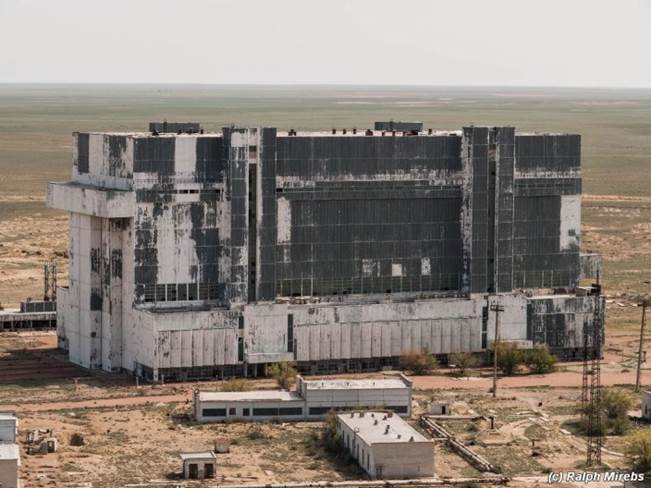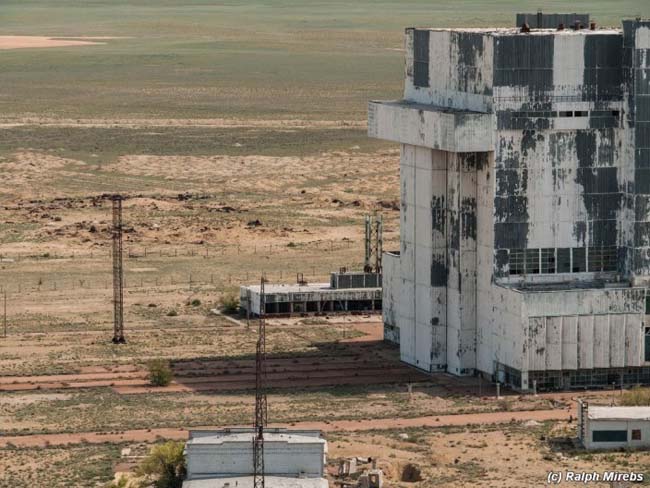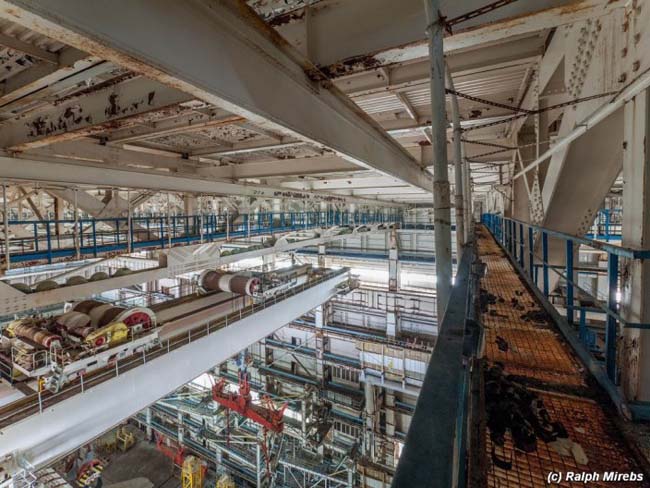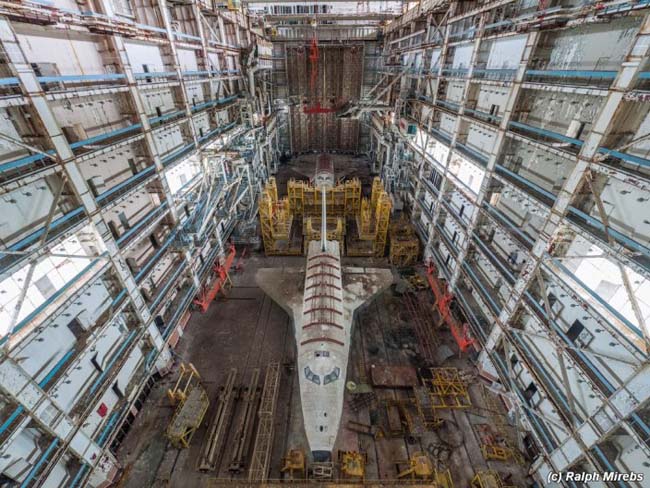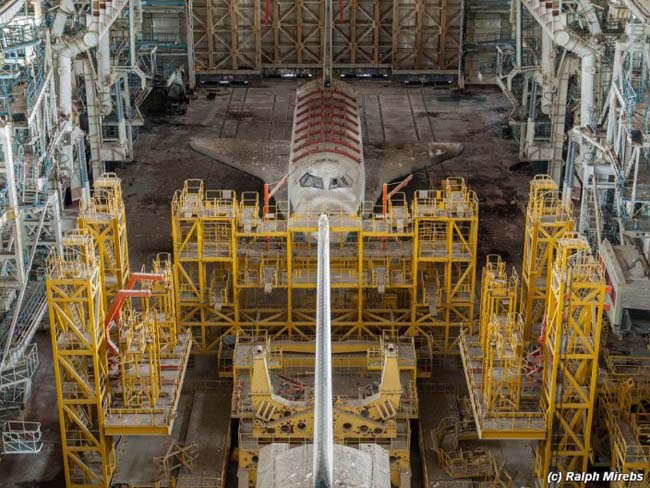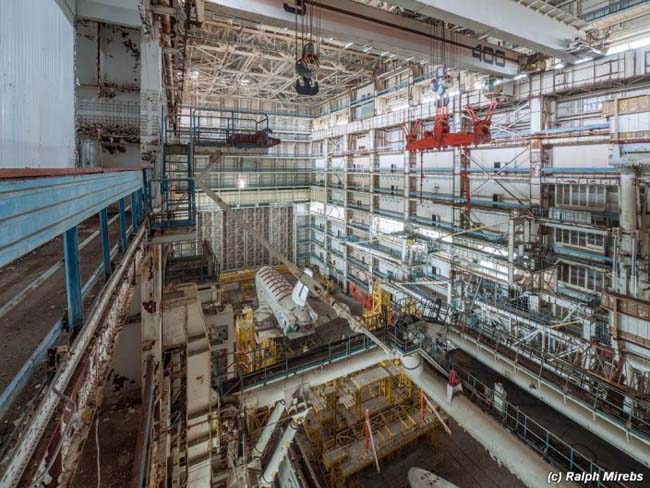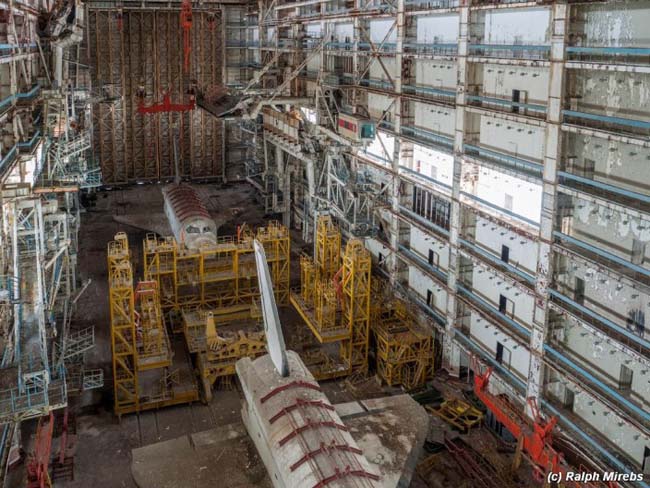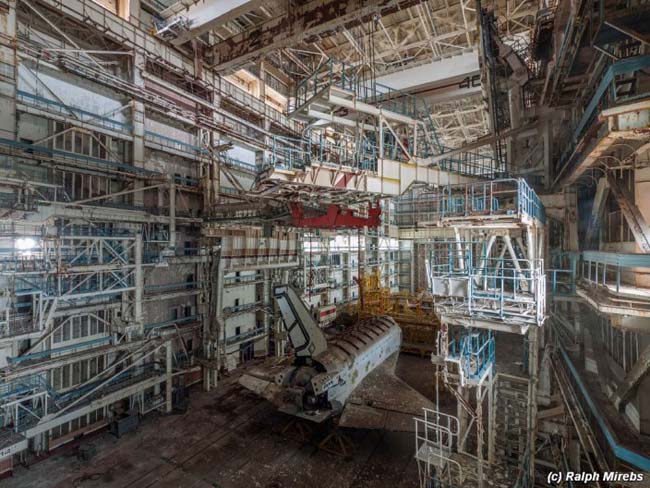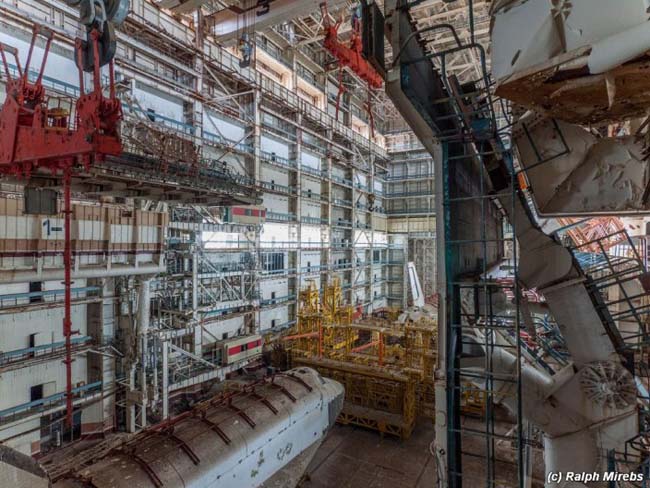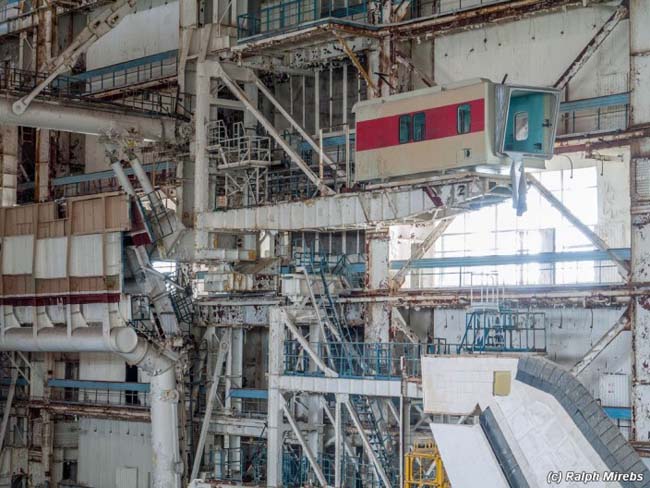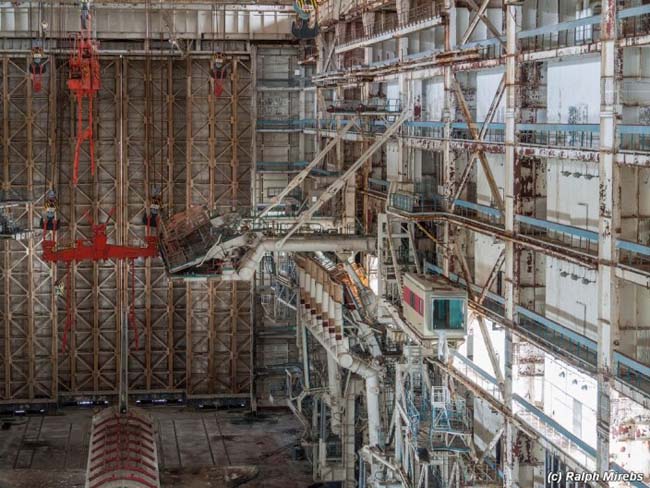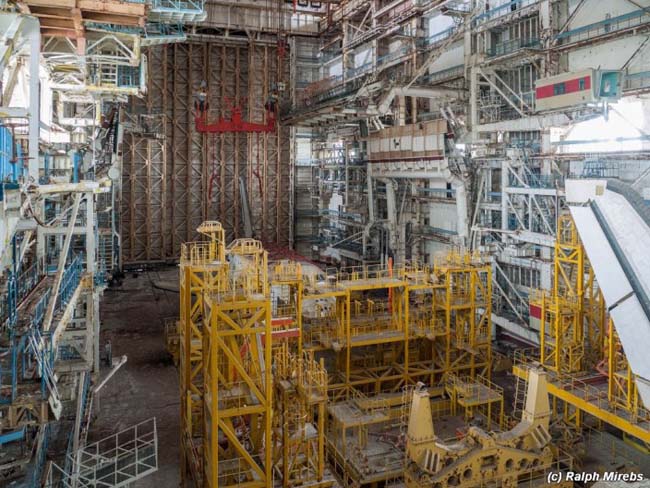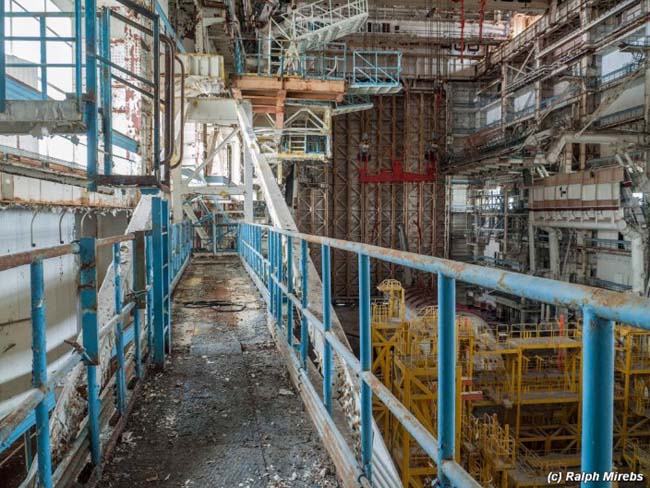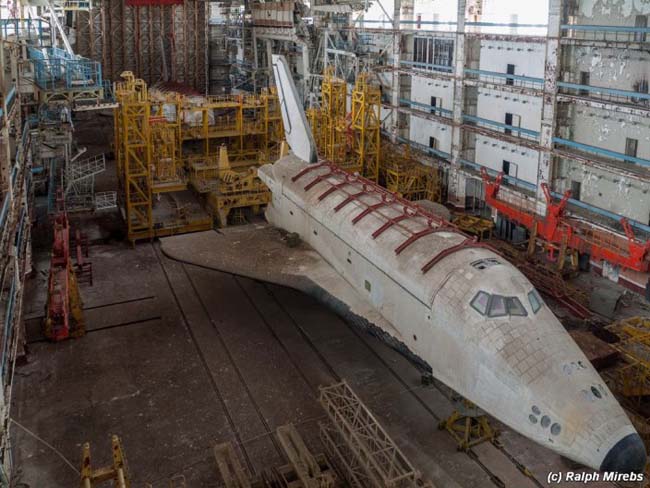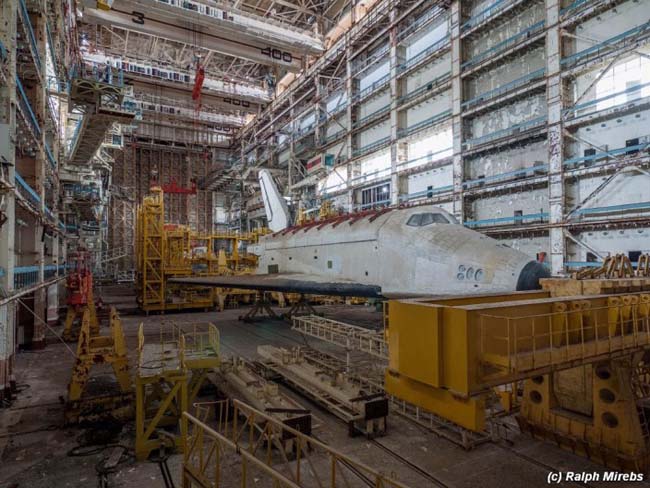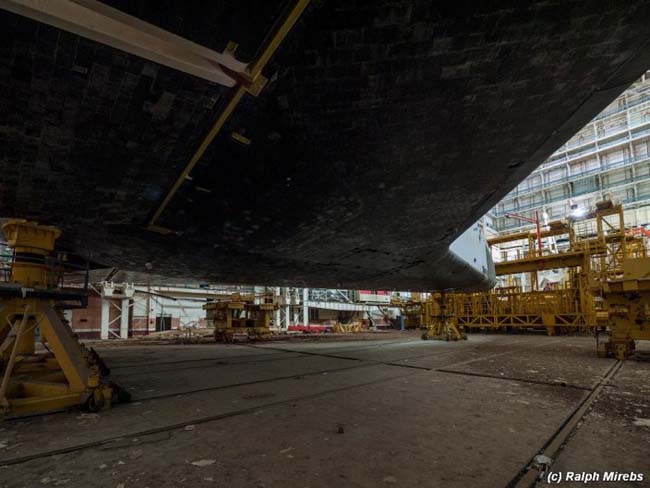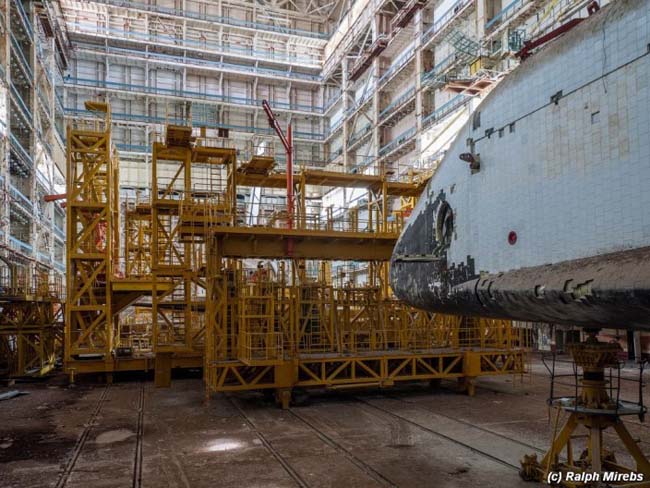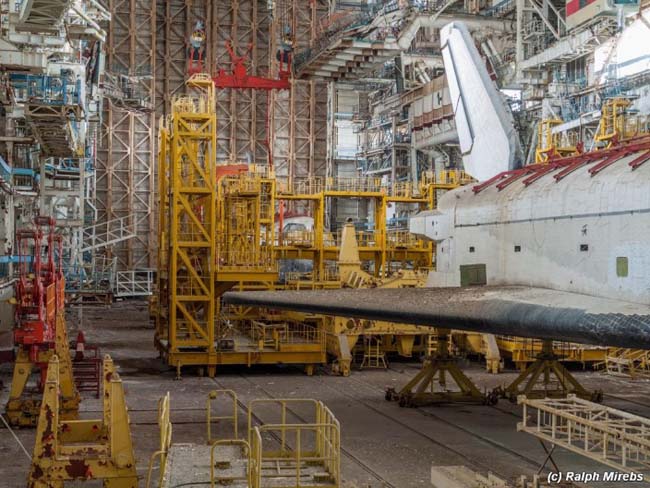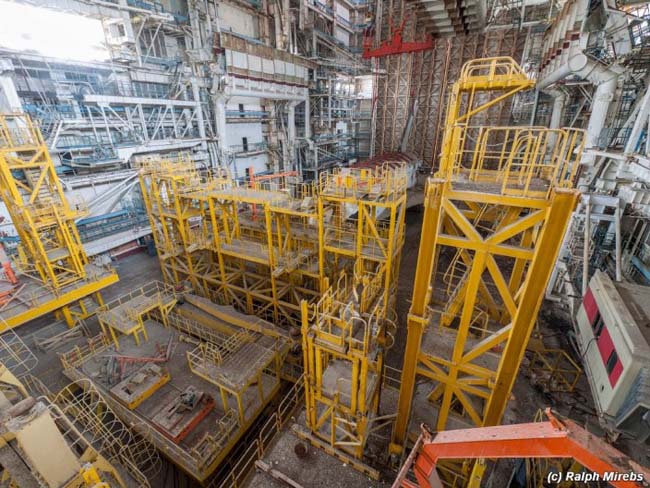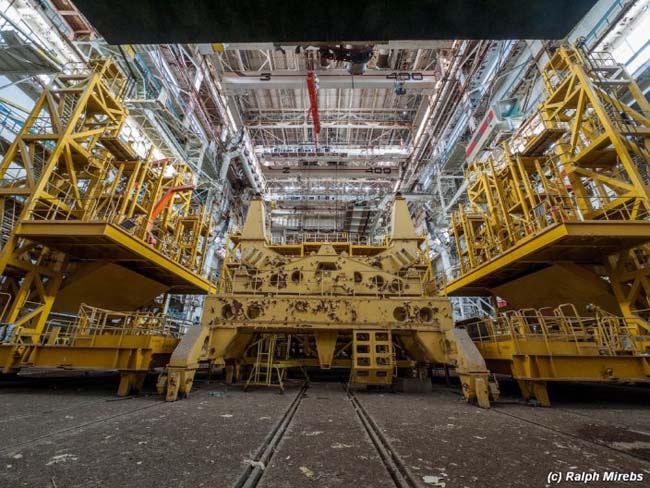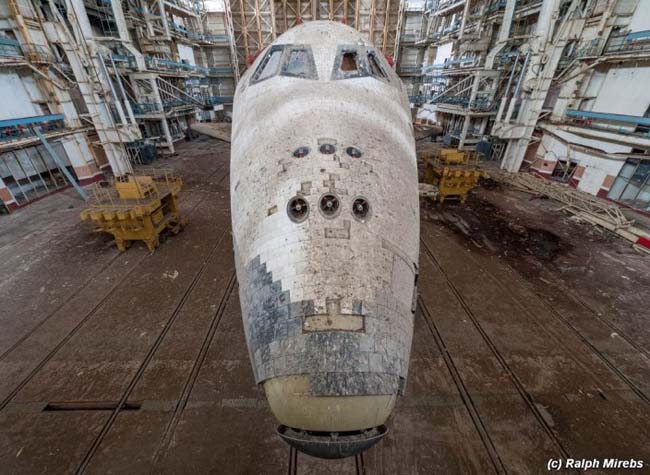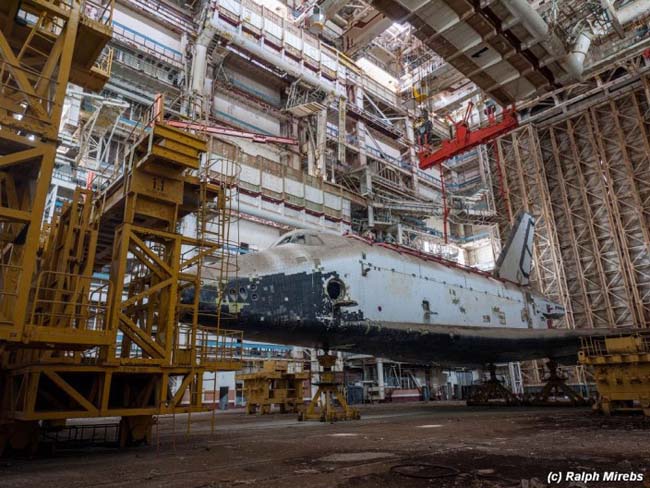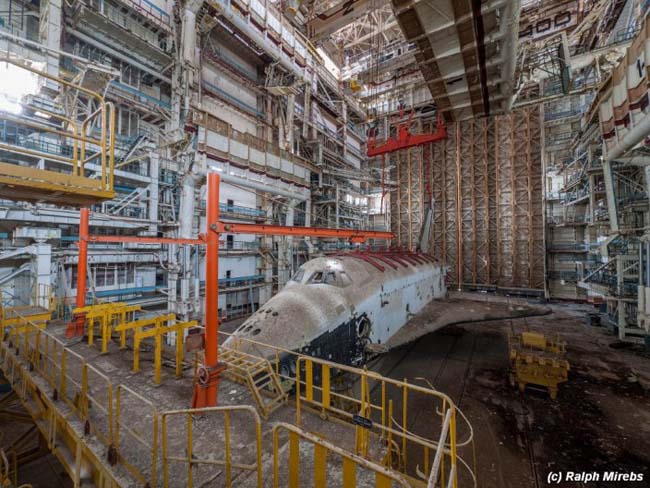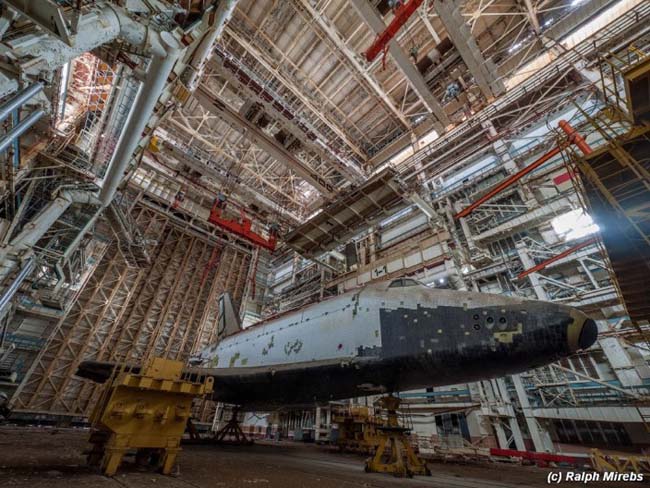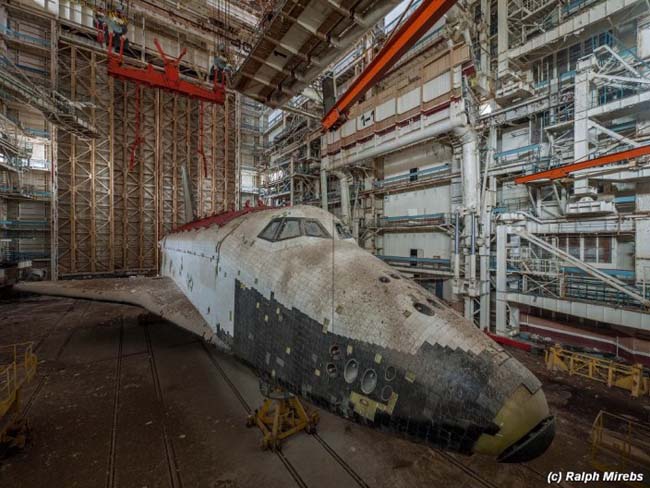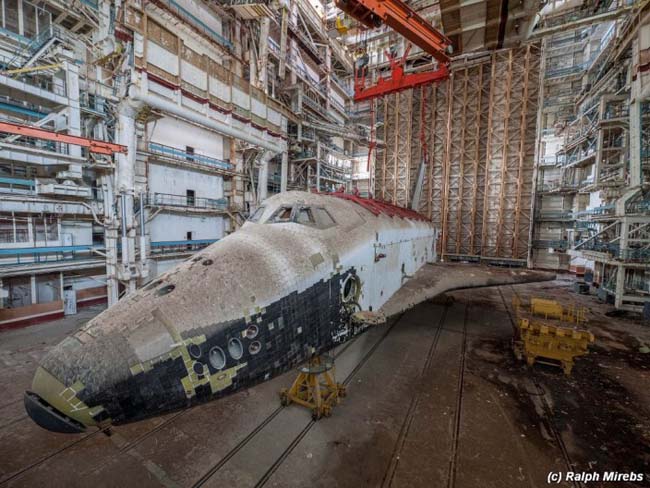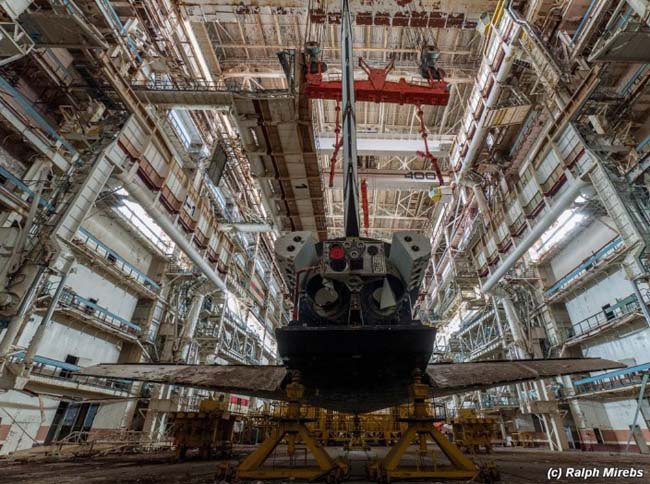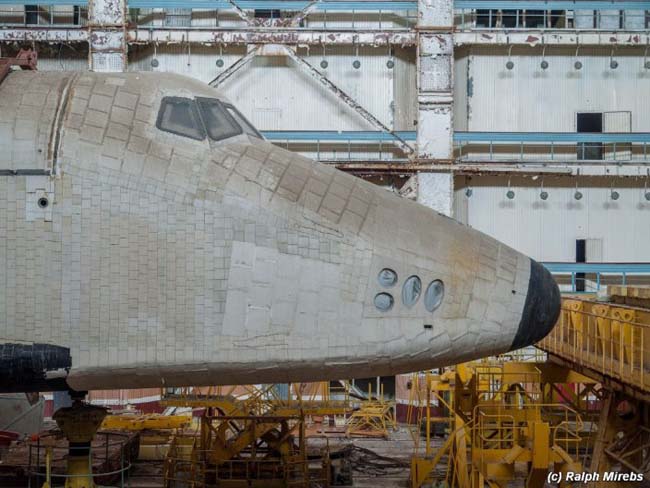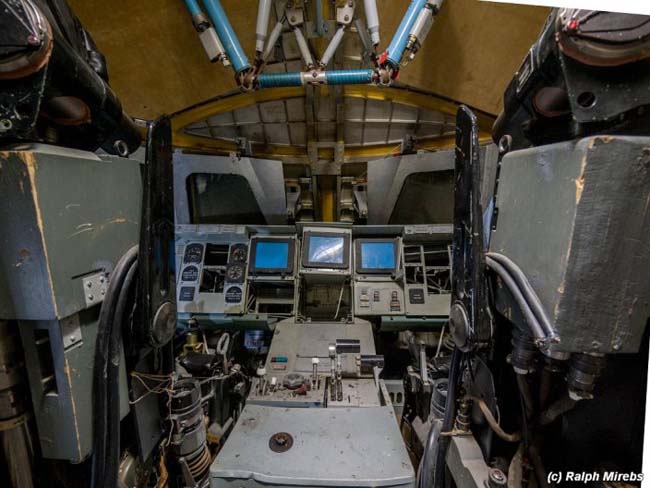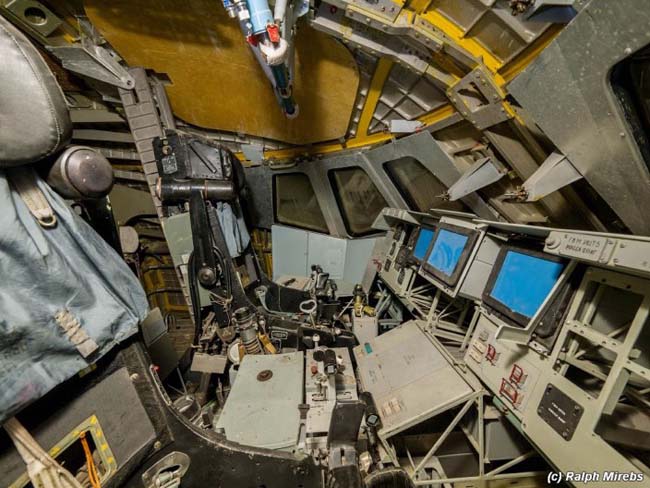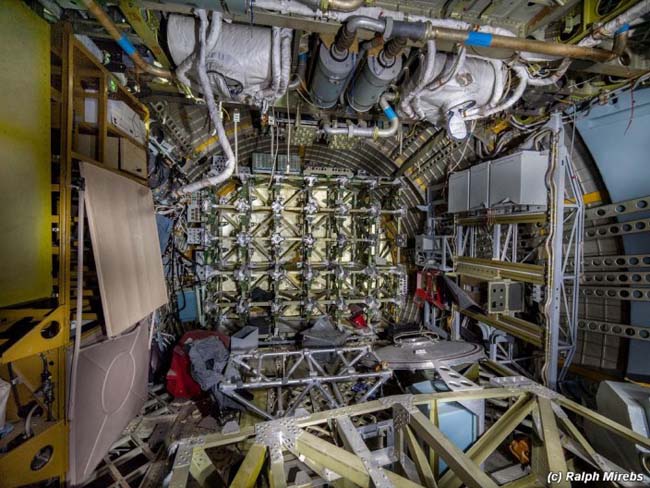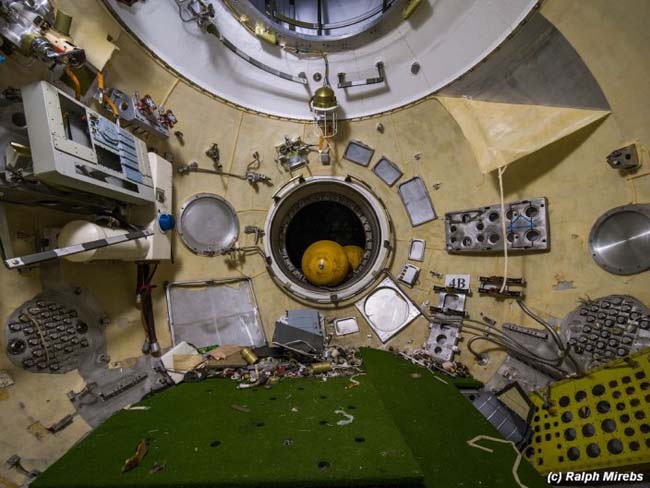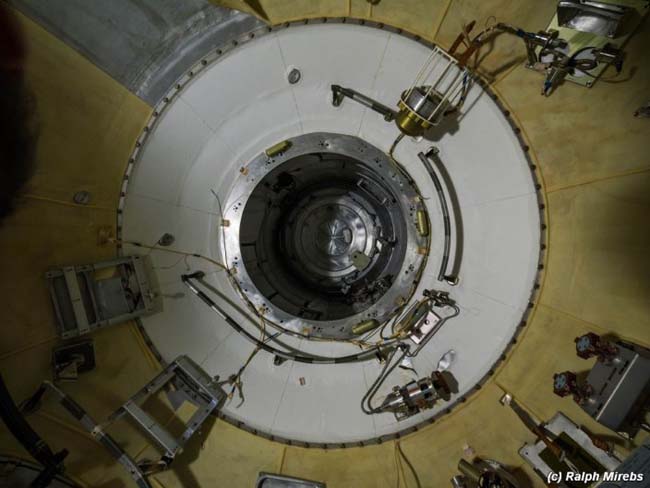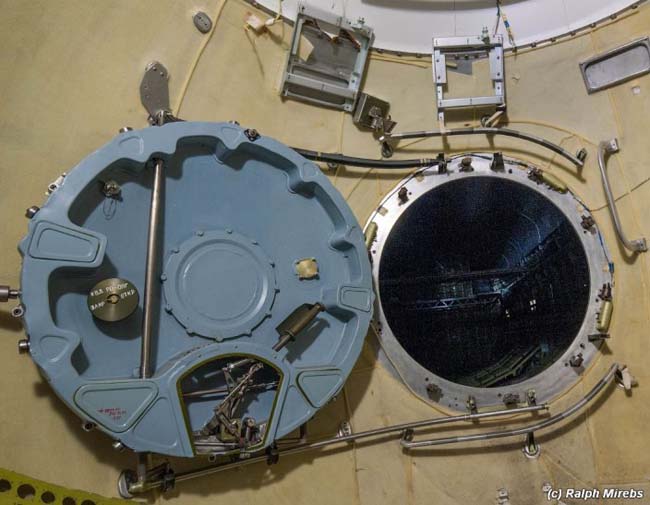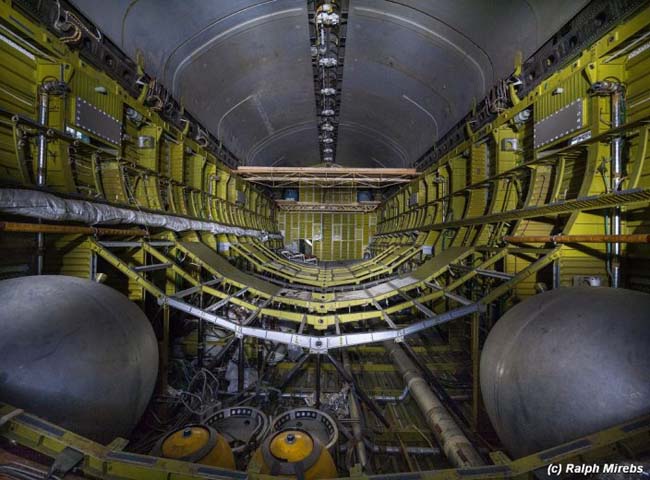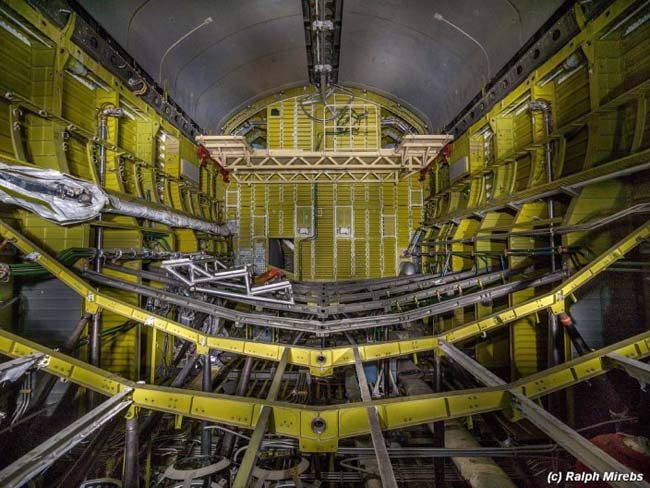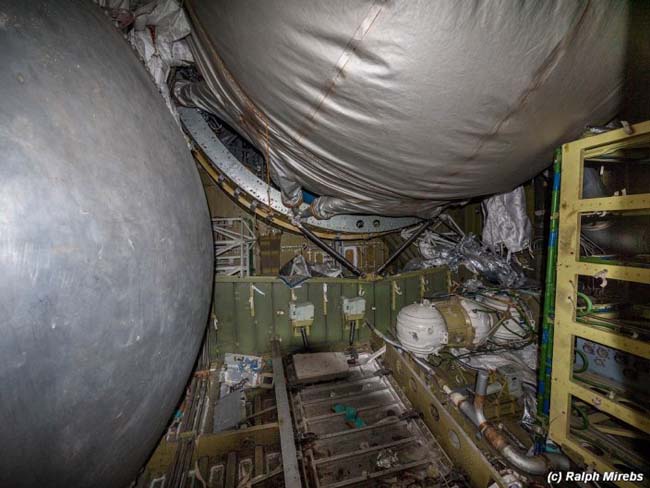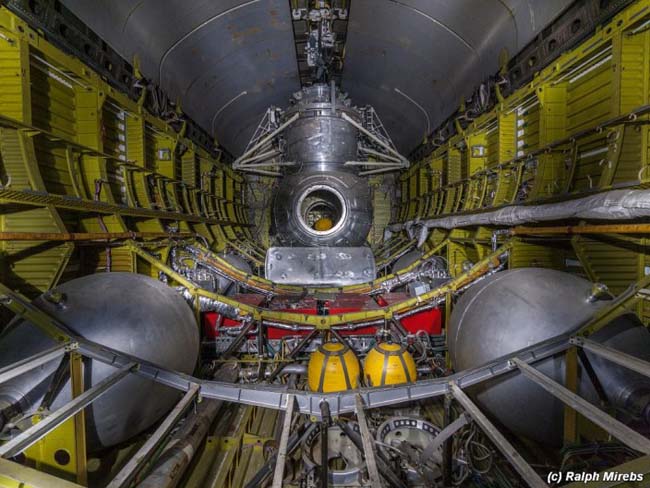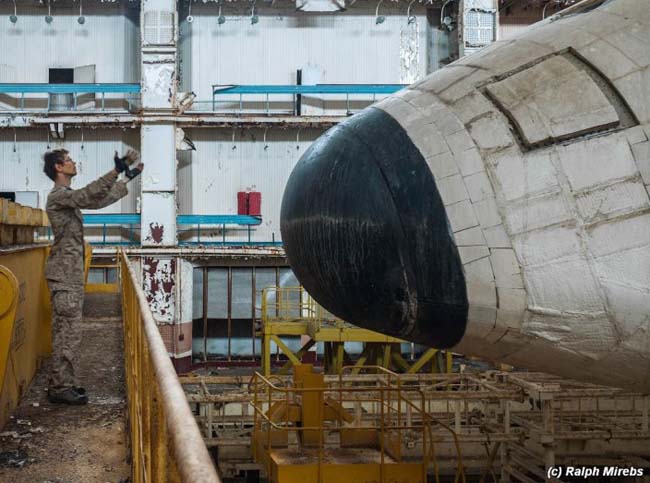.
27.07.2015
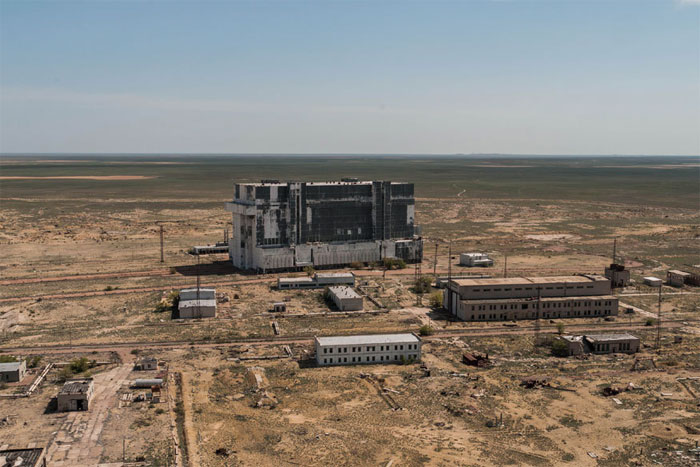
Rund 6700 Quadratkilometer groß (ca. zweieinhalb mal so groß wie das Saarland) ist das Kosmodrom von Baikonur, wo der Fotograf Ralph Mirebs diesen Hangar fand. Innen machte er eine sensationelle Entdeckung...
.
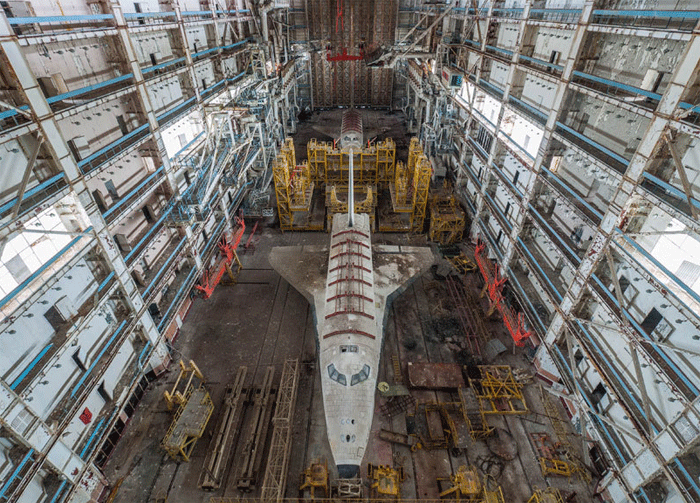
In dem Gebäude befinden sich zwei Prototypen von Raumfähren (auf dem Foto vorne und im Hintergrund), die im Rahmen des Buran-Weltraumprogramms (1974-1993) entstanden sind
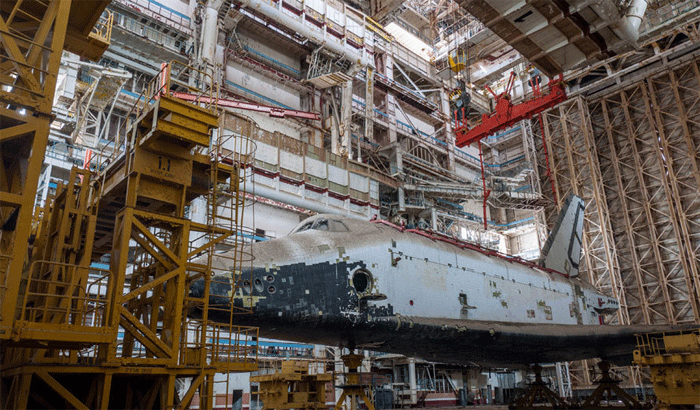
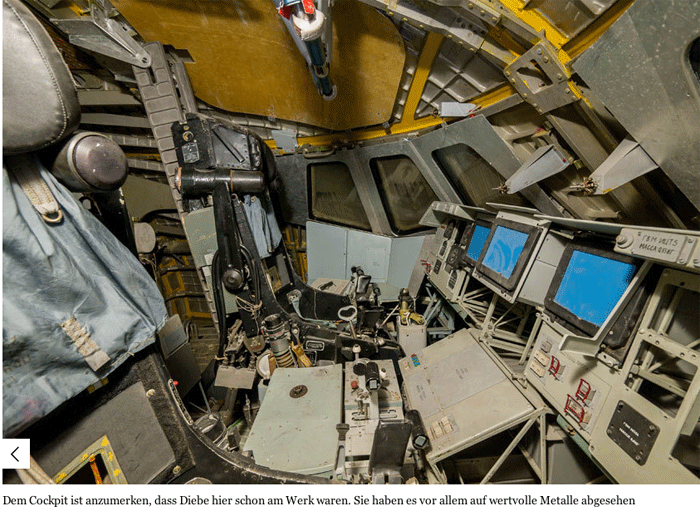
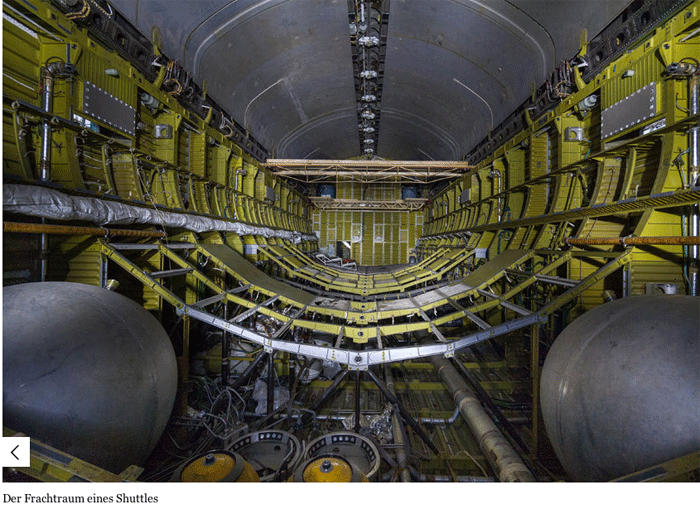
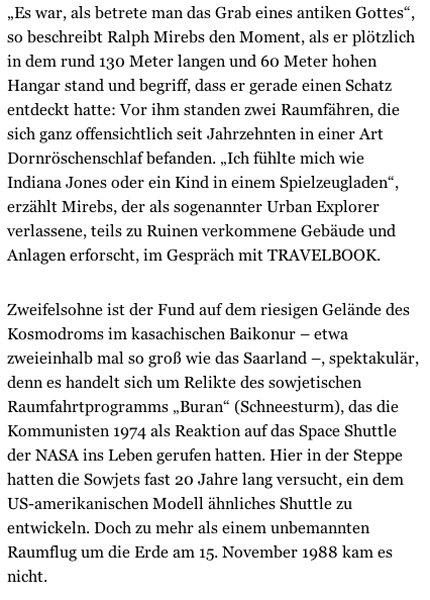
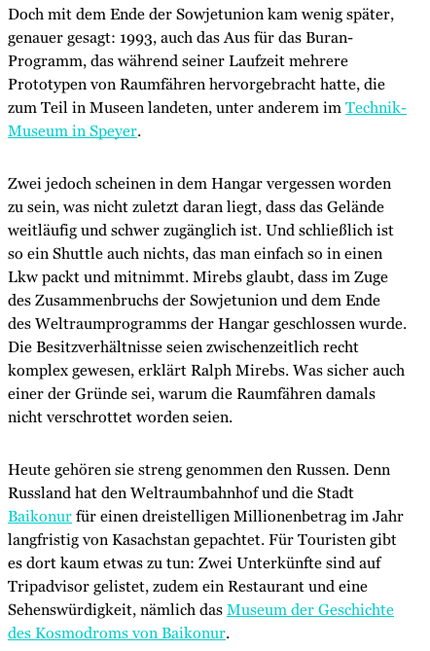
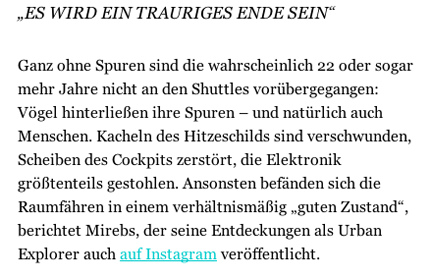
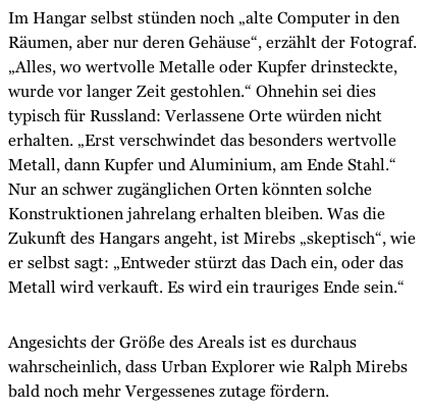
Quelle: Travelbook
-
Update: 20.11.2016
.
Man Noticed This Abandoned Hangar. What’s Inside Caught Him By Surprise
October 5, 2016
Urban explorer and photographer Ralph Mirebs found something very rare; a find unlike anything we’ve seen before. While venturing around Kazakhstan, Ralph came across an enormous abandoned building.
At first, the building looked similar to a large airport hangar but much larger. After breaking into it, he realized that this was a very special building with two of the most historical items in the world!
Scroll down to see these spectacular images for yourself.
The abandoned hangar is located at the Baikonur Cosmodrome in Kazakhstan. The Cosmodrome is miles away and still in operation today. Because the NASA Space Program was recently shut down, this is the only area that astronauts can make their way up to the International Space Station via Russian Soyuz space shuttles.
This hangar in particular is from a previous time when the Russians and the Americans were competing in a race for space exploration.
The hangar was erected in 1974 for the Buran Space Shuttle Program where technology and design would fuse to create some of the most incredible exploration vessels ever conceived. The Buran Shuttle Program was halted in 1988 but the hangar was operational until 1993 and was the home to three of the most advanced pieces of technology of their time.
The collapse of the Soviet Union caused the demise of this facility in 1993. Sadly, only one shuttle of three ever partook in a mission. The shuttle completed one unmanned orbit before it was grounded and destroyed in a different hangar that collapsed on top of it.
There are two shuttles from the Buran Space Program left and they sit in idle, turning into historic relics, within a forgotten and abandoned building located in Kazakhstan.
The facility was an incredibly advanced building with atmospheric pressure control systems in place to keep dust and debris outside of its thick walls. Those systems have been turned off and now nature is slowly reclaiming this incredibly massive place.
The shuttles are being covered with dust and bird droppings more and more every day. The ceramic tiles that wrap the shuttles are starting to fall off and shatter on the floor below. It’s only a matter of time before these two pieces of space exploration history are gone forever.
Surprisingly only a few windows have been broken out but there is not much damage at all from vandals, which is a very rare sight when it comes to almost anything abandoned these days. It’s a good thing that urban explorers live by the motto, “Leave only footprints, take only photographs.”
These two shuttles never made it to launch. One shuttle was actually a mock-up shuttle that was used to test fit everything that would be used to build the two fully functioning shuttles. Of those two shuttles, only one made it to launch for an un-manned orbit. It was grounded soon after and destroyed when the hangar it was being stored in collapsed.
The facility used to build these shuttles is absolutely massive. We can’t imagine how massive this would be standing on the floor looking up. Isn’t it strange that there is an abandoned relic, completely forgotten about, that contains vehicles our civilization used to travel through space?
The yellow platforms show the sheer size of this facility. They are on pneumatic rollers that can move around the shuttles and platforms in unison in order to work on them. You would think that all of this would be highly sought after and extremely valuable.
The paint is starting to peel and the walls are starting to rust now that the climate control systems are dead. It’s only a matter of time before this entire building crumbles to the ground, crushing two iconic pieces of history.
It looks as if the working shuttle was just about ready for its maiden voyage before it was grounded during the fall of the Soviet Union. With the Russian Space Program still in full effect, it surprises us that these can be left abandoned.
But what a sight to see. Can you imagine walking into an abandoned building not fully knowing what to expect when you enter? We think that two full space shuttles sitting completely lifeless would be quite a shock.
Some of the ceramic tiles have fallen off but for the most part these shuttles are in great shape. They’re just covered in years and years of dust and bird droppings.
This is the nose of the operational prototype shuttle while the shuttle sitting in the front of the building is the test mock-up shuttle.
They are still surrounded by the working platforms which are still in excellent condition. The paint has just started to peel which means the deterioration process has just been expedited.
This is the type of thing you would expect to see in a James Bond movie but never in real life.
Seeing it in this state is bittersweet and actually very beautiful. These images are somewhat surreal.
Imagine seeing this place in its heyday. Russian scientists and engineers racing to press into the future of space exploration to discover the unknown and make history! It must have been spectacular.
The holes on the front of the nose cone are actually thrusters that would be used to slightly steer the shuttle as it is in space. The ceramic tiles that cover the shuttle were used to protect the shell from the insane temperatures that the shuttle would be exposed to.
The small round opening on the side of the shuttle is the entry hatch leading the Russian astronauts into the cockpit.
From this facility, the shuttles would have been transported to the launchpad at the Baikonur Cosmodrome which is quite a few miles away. The Cosmodrome is still used today. In fact, American astronauts head to the International Space Station from this location.
At the time the computer power of this shuttle was less than that of the cell phone in your hand. You would have to be a seriously brave person to take on a challenge like that.
The cockpit of the shuttle has been stripped of some of its equipment but most of it is still there.
The amount of equipment that is systematically placed throughout the fuselage is impressive!
The best part is that it’s all still there and photographer Ralph Mirebs was able to capture it all.
It looks like someone had a party in here at one point. Our guess is it was a few employees who found out their most impressive project was just canned.
The hatch and pressure control systems look like they would turn right on and start working immediately.
There is so much to salvage here. This door leads into the back half of the fuselage where satellites or other space equipment would be stored and launched into the sky.
Inside you can see air tanks as well as the giant hatch above that would open allowing space astronauts to release their equipment into orbit.
Being sealed off from the elements outside, the interior is relatively dust free and in amazing shape.
Past the rear storage compartment is a huge equipment room.
The other shuttle contains a docking system for connecting with other space vehicles, and an airlock used for going for spacewalks.
Two completely forgotten space shuttles are sitting to rot and over time will be crushed by the building that once protected them. Hopefully this article spreads some attention and these shuttles are restored and placed in a museum.
